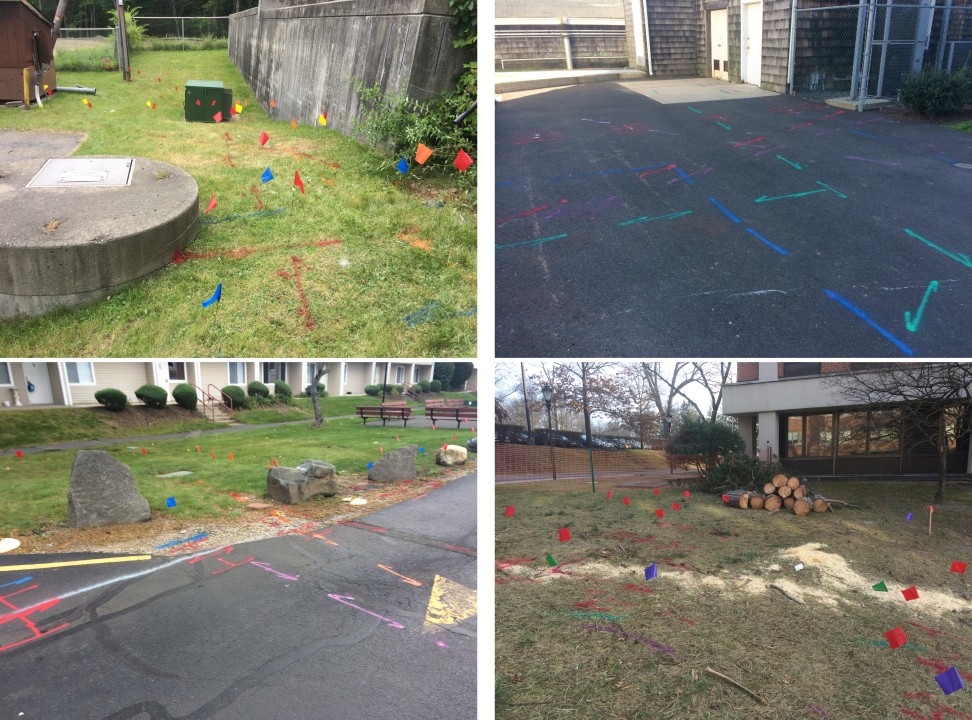The accuracy of underground utility marks on the ground surface (spray paint, pin flags or stakes) is often a concern for drillers, excavators and others breaking ground. However, an equally important but less considered issue is the completeness of marks. To understand it, we need to understand how underground utilities are detected.
First let's talk about one of the primary tools for underground utility locating: ground penetrating radar (GPR). As we all know, while some underground utilities are apparent in GPR data, others aren't; and GPR data is subject to operators' interpretation. In the GPR profile below, an apparent anomaly indicating underground utilities is shown. The GPR operator could just mark them on the ground surface according to the GPR profile from the distance mark 14ft to 18ft. However, there were actually more underground utilities to the right of the apparent anomaly, all the way to the distance mark about 26ft. The scope of this group of parallel underground utilities can actually be determined from the subtle anomaly in the top soils as noted in the GPR profile. The GPR operator's attention could just be drawn to the apparent anomaly and the subtle anomaly could be ignored, causing an incomplete mark. In other words, some underground utilities could cause "interference" in GPR data interpretation, making other utilities close to them easier to be missed.

The situation is even more true for using the other primary underground utility locating tool: electromagnetic cable/pipe locators. We often talk about aboveground interference such as metallic fences, but the interference from underground utilities themselves is also very real. The existence of some underground utilities could make other utilities nearby difficult or even impossible to detect, depending on their composing materials, depths, diameters, etc. In this kind of situations, the marks for underground utilities are rather more incomplete than inaccurate. For drillers, this is another reason you should keep away from marked utilities as far as possible: the marks could also be incomplete, not just inaccurate. For excavators, after exposing those marked utilities, be aware that there could still be underground utilities close to the ones exposed. Proceed with caution.
In conclusion, keep in mind that an utility mark could be incomplete, especially when you are sure it's accurate and tend to loose caution. Assuming its completeness is as dangerous as assuming its accuracy.




